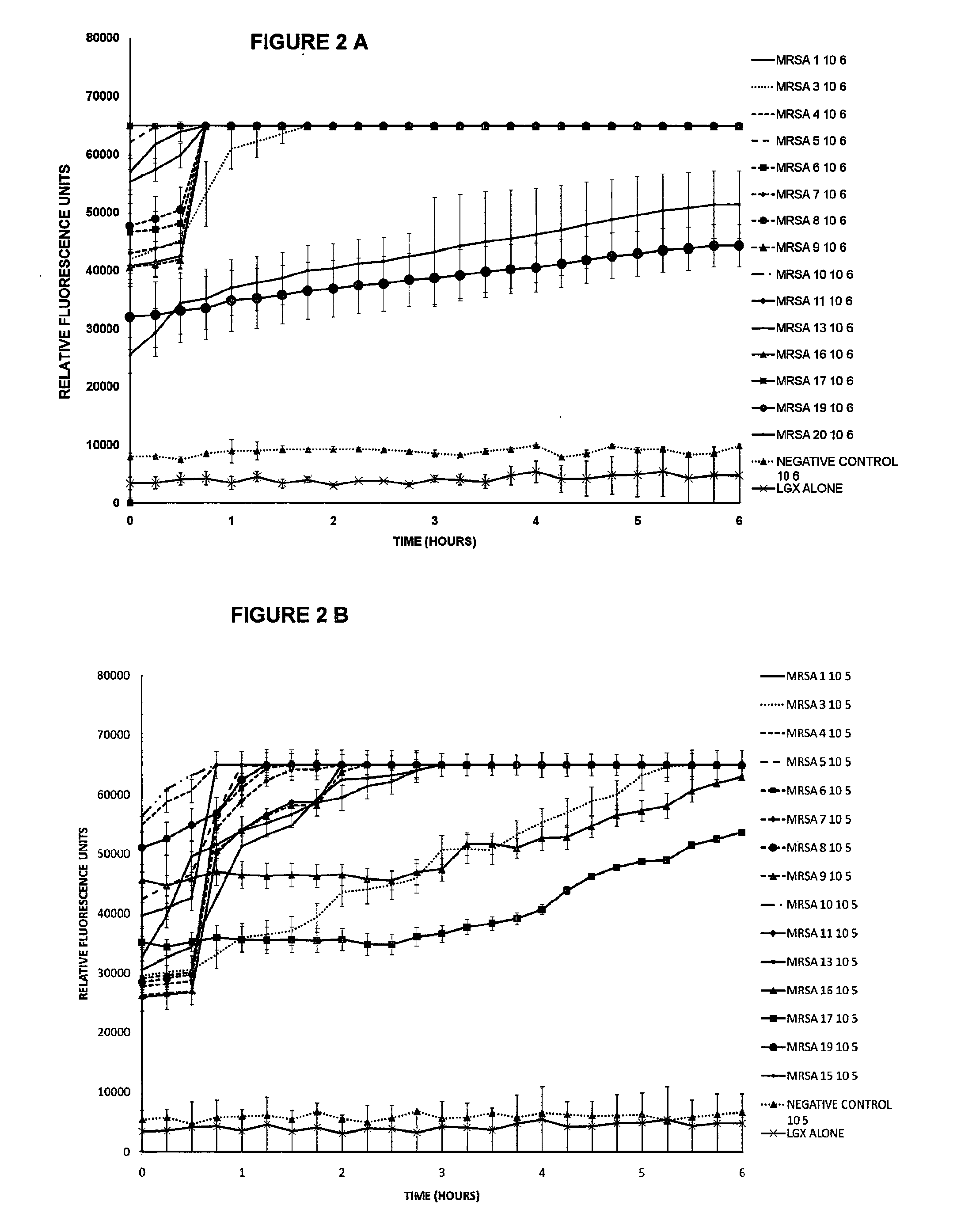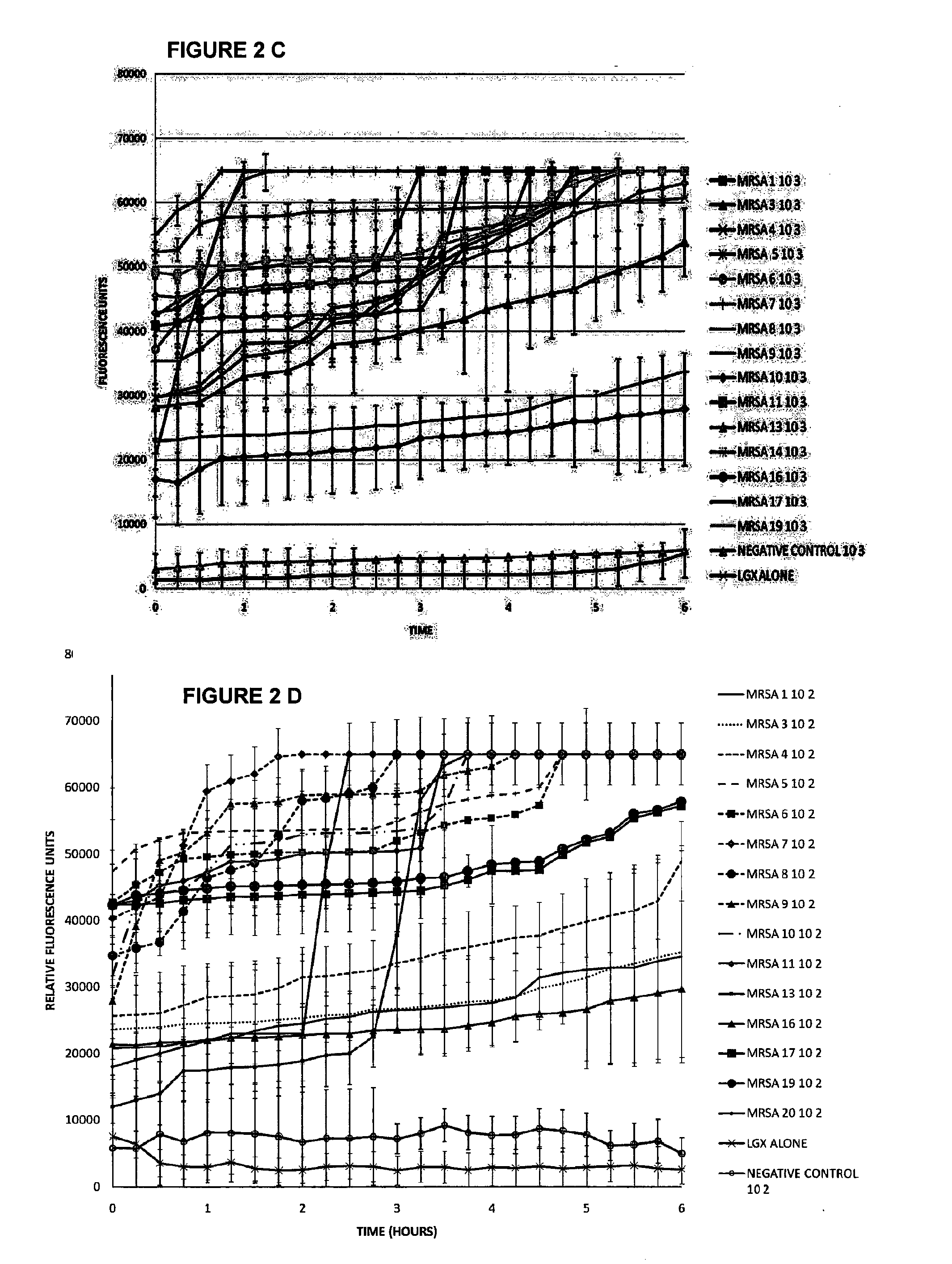Compound
a compound and compound technology, applied in the field of compound, can solve the problems of human and financial cost, cost, time-consuming and slow giving of existing swabbing and culturing techniques, and small increase in the number of infection cases, so as to achieve rapid single and multiple pathogen detection, accurate and rapid diagnosis, and cost-effective and flexible technology
- Summary
- Abstract
- Description
- Claims
- Application Information
AI Technical Summary
Benefits of technology
Problems solved by technology
Method used
Image
Examples
embodiment 1
[0214]In a preferred embodiment of the present invention R7 of formula I is represented by
[0215]This embodiment is Embodiment 1 of the present invention.
[0216]In a preferred embodiment of Embodiment 1, X is C(O).
[0217]In a preferred embodiment of Embodiment 1, Y is O, S or NH, preferably O.
[0218]In a preferred embodiment of Embodiment 1, R1a and R1b are each independently methyl, ethyl, propyl, isopropyl, butyl, iso-butyl, sec-butyl or tert-butyl, preferably ethyl, propyl, isopropyl, most preferably propyl or isopropyl. In an embodiment of Embodiment 1, R1a and R1b are identical.
[0219]In a preferred embodiment of Embodiment 1, R2a and R2b are each independently —H, —ORa, —C(O)Ra, —C(O)ORb, preferably C(O)Ra or —C(O)ORb, preferably where Ra and Rb are each independently a methyl, ethyl, propyl, isopropyl, butyl, iso-butyl, sec-butyl or tent-butyl, preferably isopropyl, butyl, iso-butyl, sec-butyl or tert-butyl, most preferably tert-butyl. In an embodiment of Embodiment 1, R2a and R2b...
embodiment 2
[0283]In a preferred embodiment of the present invention m of formula I is 0 for both R6a and R6b.
[0284]This embodiment is Embodiment 2 of the present invention.
[0285]In a preferred embodiment of Embodiment 2, X is C(O).
[0286]In a preferred embodiment of Embodiment 2, Y is O, S or NH, preferably O.
[0287]In a preferred embodiment of Embodiment 2, R1a is a methyl, ethyl, propyl, isopropyl, butyl, iso-butyl, sec-butyl or tert-butyl, preferably ethyl, propyl, isopropyl, more preferably propyl or isopropyl, most preferably isopropyl.
[0288]In a preferred embodiment of Embodiment 2, R2a is —H, —ORa, —C(O)Ra, —C(O)ORb, preferably C(O)Ra or —C(O)ORb, preferably where Ra and Rb are each independently a methyl, ethyl, propyl, isopropyl, butyl, iso-butyl, sec-butyl or tert-butyl, preferably isopropyl, butyl, iso-butyl, sec-butyl or tert-butyl, most preferably tert-butyl.
[0289]In a preferred embodiment of Embodiment 2, R3a and R4a each independently represent —H, —NO2, —OH, —C(O)Rc or —C1-6 alky...
PUM
| Property | Measurement | Unit |
|---|---|---|
| time | aaaaa | aaaaa |
| time | aaaaa | aaaaa |
| pH | aaaaa | aaaaa |
Abstract
Description
Claims
Application Information
 Login to View More
Login to View More - R&D
- Intellectual Property
- Life Sciences
- Materials
- Tech Scout
- Unparalleled Data Quality
- Higher Quality Content
- 60% Fewer Hallucinations
Browse by: Latest US Patents, China's latest patents, Technical Efficacy Thesaurus, Application Domain, Technology Topic, Popular Technical Reports.
© 2025 PatSnap. All rights reserved.Legal|Privacy policy|Modern Slavery Act Transparency Statement|Sitemap|About US| Contact US: help@patsnap.com



